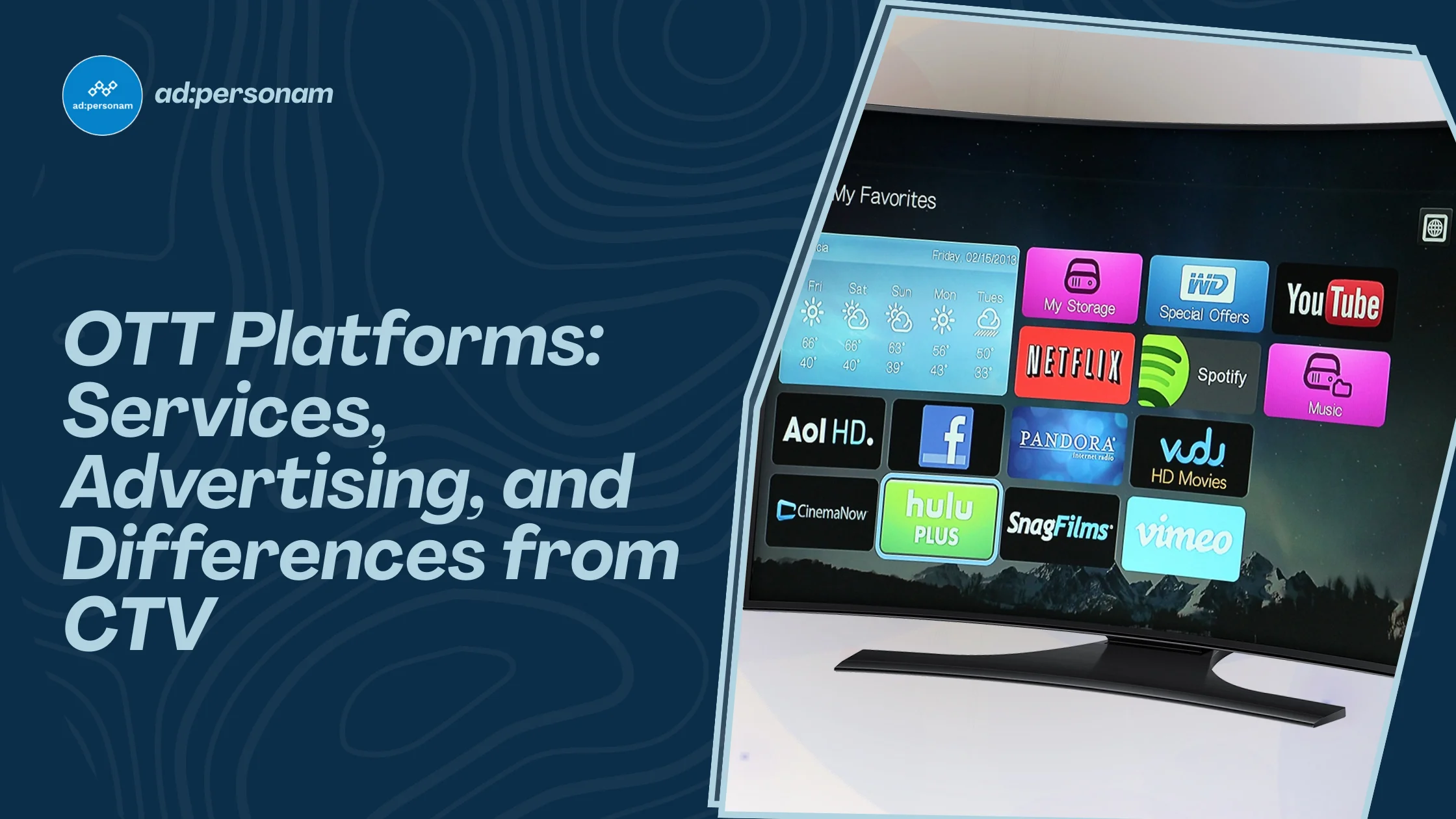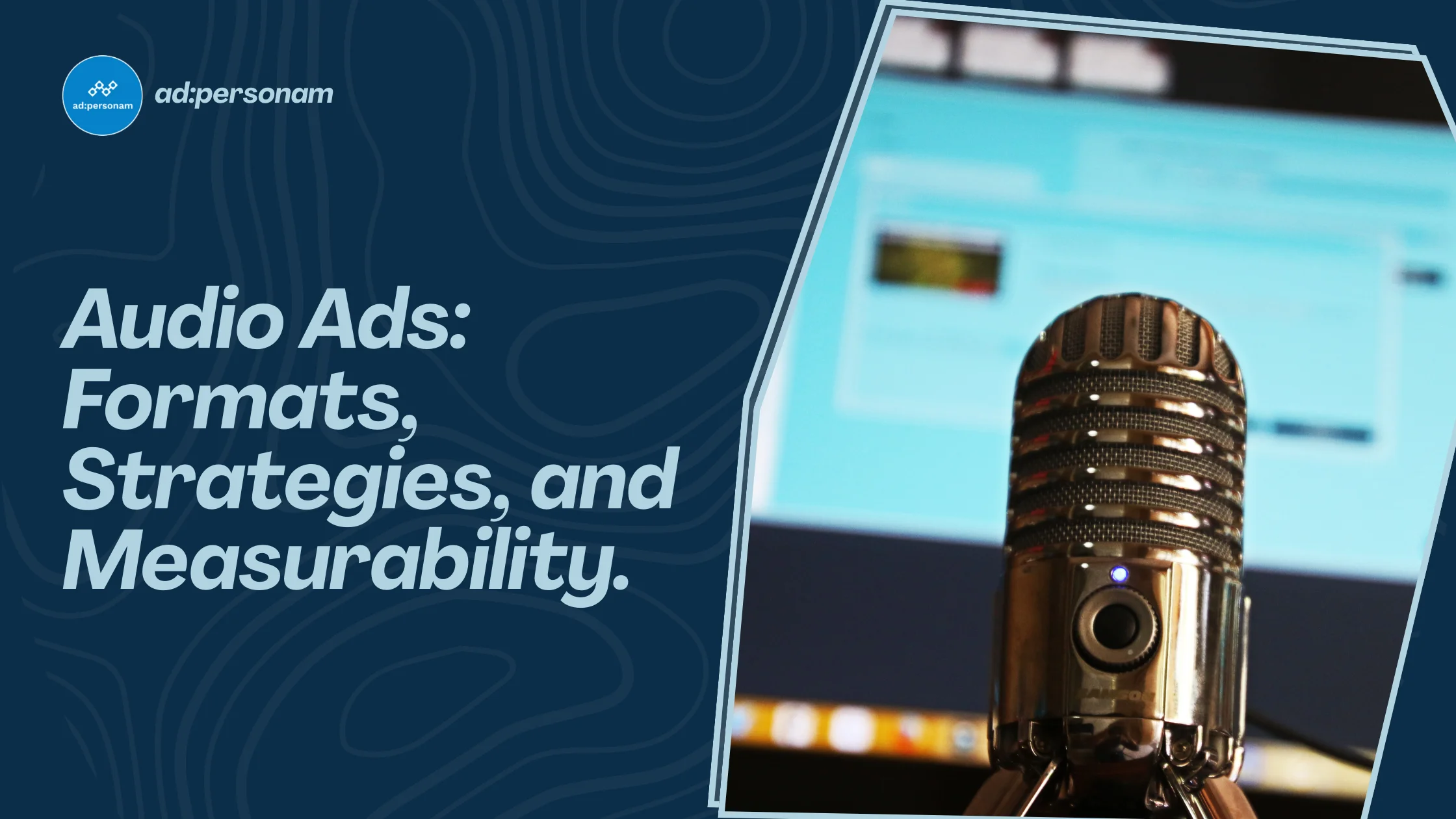CTV: Complete Guide to Advertising and Connected TV Opportunities
How do CTVs work and why do they represent a unique advertising opportunity? Find out thanks to our complete guide.
Contents
- What is CTV and what does it mean in the television context
- Difference between CTV and Linear TV
- How Connected TV Works
- The Connected TV Scenario in Italy and Worldwide
- How Advertising on CTV Works
- Opportunities for Brands and Sectors That Benefit Most from Connected TV
- Data and Measurement in CTV
- How CTV Impacts Brand Marketing Strategies
- The Future of CTV
- Frequently Asked Questions about CTV and ad:personam

Connected TV (CTV) has revolutionized the way we watch video content and, above all, the way brands communicate with consumers. From traditional television to on-demand content, consumption has become increasingly personalized, interactive and trackable.
In this complete guide we'll explore everything you need to know about CTV: what it is, how it works, which devices support it, but especially what opportunities it offers companies in terms of digital advertising.
What is CTV and what does it mean in the television context
Connected TV (CTV) is television connected to the Internet that allows access to streaming content through dedicated apps, using IP protocols instead of traditional broadcast transmissions. In the commercial context, CTV represents an evolution of TV advertising because it allows brands to operate with precise targeting, accurate measurement and personalization, surpassing the classic advertisements we see every day on TV.
We must then further distinguish connected TVs: Smart TVs are TVs with integrated apps; OTT are services distributed "over the top", like Netflix and Prime Video; IPTV (Internet Protocol Television) is a mode via operator network (for example TIMVision).
Therefore, the term "connected TV" identifies all devices that allow watching this content, while OTT constitutes the on-demand programming consumed.
Difference between CTV and Linear TV
Unlike linear television, which follows fixed programming and offers a passive experience, CTV is on-demand, interactive and user-centered. Viewers choose what to watch and when, receiving personalized suggestions. From the advertising side, CTV advertising provides real-time data on impressions, views, clicks and conversions, increasing the effectiveness of advertising investment.
Different Types of Connected TV Devices
Various devices can support a CTV platform, such as:
- Smart TVs: very widespread nowadays, they guarantee users a simple and intuitive interface. However, viewing quality is strongly linked to hardware power.
- Set-top boxes (like Sky Q) offer improved performance at the cost of installation;
- Gaming consoles (Xbox, PlayStation) support streaming even though they're not designed for this specific function;
- Dongles (Chromecast, Fire Stick) allow immediate access to CTV services with variable performance; Actually, even non-"smart" TVs can become "connected TVs" thanks to external device support, like Dongles. However, they require more complex configurations and offer a less fast connection experience.
How Connected TV Works
Connected TV consumption requires that content be distributed via CDN networks using IP protocols. Users access through dedicated apps, while streaming occurs in adaptive bitrate (ABR) mode, which adjusts quality based on available bandwidth. In parallel, consumption data, preferences, duration, frequency are collected, which feed platforms that manage advertising insertion, such as DSPs, enabling real-time advertising targeting.
The Connected TV Scenario in Italy and Worldwide
Data collected from the 2024 Adex Benchmark shows that, in Italy, the Display advertising sector is driven by Connected TVs. Over the past year, investments in this specific advertising sector grew by 24.5%, precisely thanks to connected TVs.
In fact, according to an Auditel-Censis report, 91% of the Italian population, between 18 and 94 years old, uses a CTV device in their home.
However, connected TVs are also widely used abroad. According to eMarketer estimates, in 2025, US CTV users will be almost 70% of the population. Not surprisingly, in the last two years, spending in the American digital advertising sector has increased dramatically. In 2024, more than 33.4 billion was invested in digital advertising on connected TV. While in 2025, it's thought they could exceed $30 billion, growing at double-digit rates until 2028.
How Advertising on CTV Works
Advertising via Connected TV is delivered through DSP platforms, which cross-reference demographic, behavioral and geolocation data to reach ideal users in real-time. Ads can be skippable or not, delivered at the beginning, middle or end of content. They can also integrate with remarketing strategies, to find and re-engage users previously reached on other channels.
How Advertising Purchases Work on Connected TV (Programmatic and Direct)
Advertising purchases can occur through various models: Programmatic Guaranteed, i.e. guaranteed volumes at fixed price; Private Marketplace, in a more reserved and selective manner; Open Auction, via open auction; or with Direct Deal agreements between brand and publisher. Transactions occur on SSP and DSP platforms, which use the OpenRTB 2.6 standard protocol.
Among the DSPs available in the Italian market capable of managing CTV ads, ad:personam stands out for advanced targeting features, multi-device synchronization and dynamic creatives. Learn more about our Connected TV advertising solutions.
Advertising Formats Available on Connected TV
Within Connected TV formats include pre-roll, mid-roll and post-roll videos, i.e. spots before, during and after viewing; interactive displays navigable with the remote control; non-skippable ads that improve completion rates; and overlay banners that integrate streaming discretely.
The comparison with traditional advertising highlights greater interactivity, engagement and measurability, also because they are less invasive and proposed to an already selected target before the sponsored content appears.
Advantages of Connected TV Advertising
CTV advertising offers concrete advantages: more precise targeting, real-time measurement, high level of engagement, incremental reach and a brand-safe environment. IAB Europe, in 2023 recorded a 23.5% growth in CTV investments, with significant penetration in markets like Italy, Germany, UK and Spain.
Challenges and Issues of CTV Advertising
CTV also presents challenges, which will become increasingly evident over time. Device and system fragmentation complicates delivery, lack of standards can slow implementation, initial costs are higher compared to linear TV and cross-device measurement is not always univocal. To overcome them, it's recommended to rely on transparent DSPs, adopt unified IDs and use formats compliant with IAB standards.
Opportunities for Brands and Sectors That Benefit Most from Connected TV
Sectors like automotive, retail, entertainment and financial services find in CTV an ideal channel: cars present themselves with emotional videos, retail exploits localized offers, entertainment promotes interactive trailers and financial services offer personalized educational content. 61% of potential car buyers interviewed in the USA, UK and Germany state, for example, that CTV ads influenced their purchase decision. Local or niche brands can also exploit CTV's precise segmentation to maximize returns even with reduced budgets.
Data and Measurement in CTV
Fundamental metrics for measuring the effectiveness of CTV ads include viewability, completion rate, impressions, CTR and CPCV, up to conversions for funnel exit. Tools like Nielsen Digital Ad Ratings, Comscore and integrated DSP dashboards allow performance monitoring, attributing value to each exposure and integrating data across channels.
How CTV Impacts Brand Marketing Strategies
Connected TV is a key asset in omnichannel strategies: thanks to synergy between mobile, desktop and TV, brands can cover the entire funnel, leveraging first-party data from CRM and website for advanced segmentation. Company CMOs, i.e. Chief Marketing Officers, can thus tell coherent stories across different screens, optimizing emotional impact and measurable effectiveness.
The Future of CTV
The future of Connected TV will see increasingly massive integration of artificial intelligence and behavioral data to improve predictive targeting. There will also be the rise of shoppable ads, which allow speeding up purchases and reducing decision times, synergy with the second screen and expansion of out-of-home consumption, in places like gyms, hotels and airports.
Frequently Asked Questions about CTV and ad:personam
What is meant by CTV?
Connected TV (CTV) is a television connected to the internet, capable of transmitting content via streaming through dedicated apps or browsers. Thanks to online advertising management platforms, like ad:personam, CTV represents a strategic opportunity to reach profiled audiences in highly engaging digital environments.
What is Connected TV?
Connected TV is an evolved form of television that allows access to on-demand and streaming content via internet connection. In the advertising context, ad:personam, among the DSPs on the market, allows you to activate programmatic campaigns directly on CTV, without minimum spending requirements.
What's the difference between TV and Smart TV?
The main difference between traditional TV and Smart TV lies in connectivity. A Smart TV can connect to the internet and access streaming content, apps and digital services, while a traditional TV requires additional devices for these functions. Smart TVs therefore fall into Connected TVs, offering new automated advertising spaces, easily activatable with DSP solutions like ad:personam.
Start integrating connected TV advertising right now with ad:personam's DSP! Book our demo!
You might also like

OTT Platforms: Complete Guide to Advertising, CTV, and Streaming Services
Comprehensive guide to OTT platforms: how streaming services work, differences with CTV, and why they matter in programmatic advertising.

Audio Advertising: Complete Guide to Programmatic Audio & Podcast Ads
Discover what audio ads are, explore high-definition audio ad formats, and learn how to create effective digital audio campaigns with programmatic DSP and AI-driven optimization.

Contextual Advertising: The Complete Guide to Privacy-First Targeting
Discover how contextual advertising delivers effective, privacy-compliant campaigns without cookies. AI-powered targeting for the cookieless era.